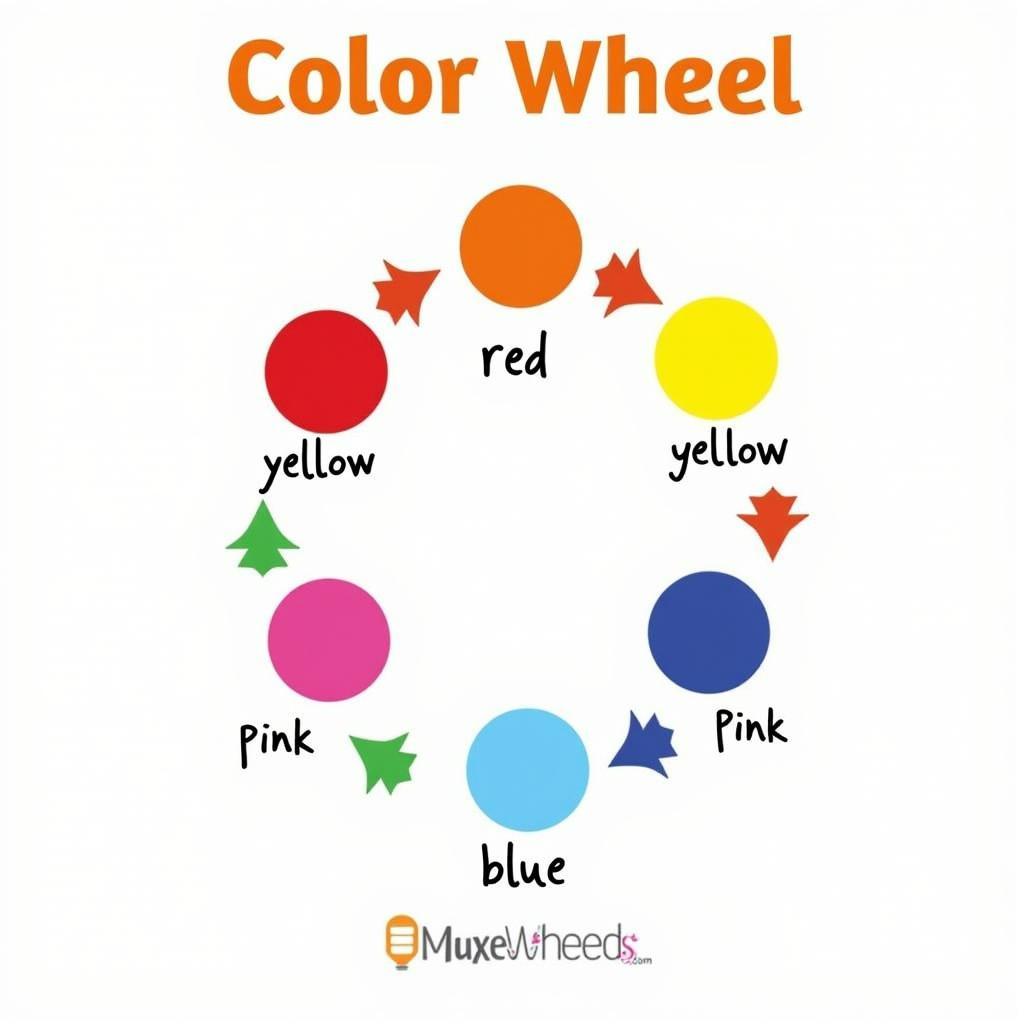Creating the perfect shade of orange for your culinary creations is easier than you think! Whether you’re frosting a vibrant cake, adding a splash of color to your homemade playdough, or simply experimenting with food dyes, this guide will show you how to make orange food coloring like a pro.
Unlocking the Secret: What Colors Make Orange Food Coloring?
The key to achieving a beautiful orange hue lies in the magic of color mixing. Just like a painter combines primary colors to create a spectrum of shades, you can easily whip up orange food coloring using two readily available colors: red and yellow.
Mixing Orange Food Coloring: A Step-by-Step Guide
Follow these simple steps to create your desired shade of orange:
- Start with a clean palette: Use separate bowls or spoons for each color to avoid contamination and ensure accurate color mixing.
- Add your base color: Begin with a small amount of yellow food coloring. Remember, it’s always easier to add color gradually than to correct an overly saturated shade.
- Introduce the red: Slowly incorporate red food coloring, a few drops at a time, into the yellow base.
- Mix thoroughly: Stir the colors together until you achieve a smooth and consistent orange hue.
- Adjust and perfect: Depending on the intensity and shade of orange you desire, add more red for a deeper, reddish-orange or more yellow for a brighter, yellowish-orange.
 Mixing Food Coloring to Make Orange
Mixing Food Coloring to Make Orange
Tips and Tricks for Orange Food Coloring Success
- Start small: Always begin with a small amount of food coloring and gradually add more until you reach your desired shade. This allows for better control and prevents accidental over-coloring.
- Consider the type of food coloring: Gel or paste food coloring tends to be more concentrated than liquid food coloring, so you may need to adjust the quantities accordingly.
- Factor in the food’s natural color: The original color of the food you’re coloring will also impact the final result. For instance, adding orange food coloring to a white frosting will yield a brighter and truer orange than adding it to a brown batter.
 Different Shades of Orange Food Coloring
Different Shades of Orange Food Coloring
Mastering Orange: From Tangerine to Burnt Orange
By adjusting the ratio of red to yellow, you can create a wide spectrum of orange shades:
- Vibrant Orange: Use a 1:1 ratio of red and yellow food coloring for a classic, bright orange.
- Tangerine Orange: Add slightly more yellow than red to achieve a vibrant, citrusy orange.
- Red-Orange: Incorporate more red than yellow for a deeper, warmer orange hue reminiscent of sunsets.
- Burnt Orange: For a rich, earthy orange, add a tiny drop of brown food coloring to your red and yellow mixture.
Beyond the Basics: Exploring Orange Food Coloring
“Understanding the color wheel and the principles of color mixing can significantly enhance your ability to create a vast array of colors using just a few basic food colorings.” – Chef Anya Patel, renowned pastry chef and food stylist
Beyond mixing red and yellow, there are other ways to create unique orange shades using food coloring:
- Pink and Yellow: Combine pink and yellow food coloring for a softer, more pastel orange hue.
- Red, Yellow, and Blue: For a deeper, more complex orange, experiment with adding a tiny drop of blue food coloring to your red and yellow mixture. This will create a subtle brown undertone that adds depth and richness to the orange.
 Food Coloring Mixing Chart for Orange
Food Coloring Mixing Chart for Orange
Conclusion
With a few simple techniques and a dash of creativity, you can easily create a spectrum of orange hues using food coloring. Whether you’re aiming for a vibrant tangerine or a warm burnt orange, the possibilities are endless! Experiment with different ratios and combinations to discover your perfect shade and add a pop of color to your culinary creations.
FAQs
1. Can I use natural food coloring to make orange?
Yes, you can use natural ingredients like turmeric, paprika, or carrot juice to create orange food coloring. However, keep in mind that natural food colorings may not be as vibrant or long-lasting as artificial food colorings.
2. What happens if my orange food coloring is too dark?
If you’ve added too much food coloring and your orange is too dark, you can try diluting it by gradually adding small amounts of the food you’re coloring (e.g., frosting, batter) until you achieve the desired shade.
3. Can I store leftover orange food coloring?
You can store leftover food coloring in airtight containers in a cool, dark place. However, the color may fade over time.
4. What are some fun ways to use orange food coloring?
Orange food coloring is perfect for dyeing frosting, cake batter, cookie dough, playdough, slime, and more! You can also use it to create colorful drinks, sauces, and decorations for your culinary creations.
5. Can I mix food coloring brands?
While it’s generally fine to mix different brands of food coloring, keep in mind that the concentrations and shades may vary slightly.
For more tips and tricks on color mixing and creative uses for food coloring, explore our other informative articles:
- How to Make Orange Food Coloring From Red and Yellow
- How to Make the Color Orange with Food Coloring
- What Colors of Food Coloring Make Orange
- How to Make Orange Food Coloring with Red and Yellow
- How Do You Make the Color Orange with Food Coloring
Need help with your next colorful creation? Contact us at 0373298888, email us at [email protected], or visit us at 86 Cầu Giấy, Hà Nội. Our dedicated team of color experts is available 24/7 to assist you!

